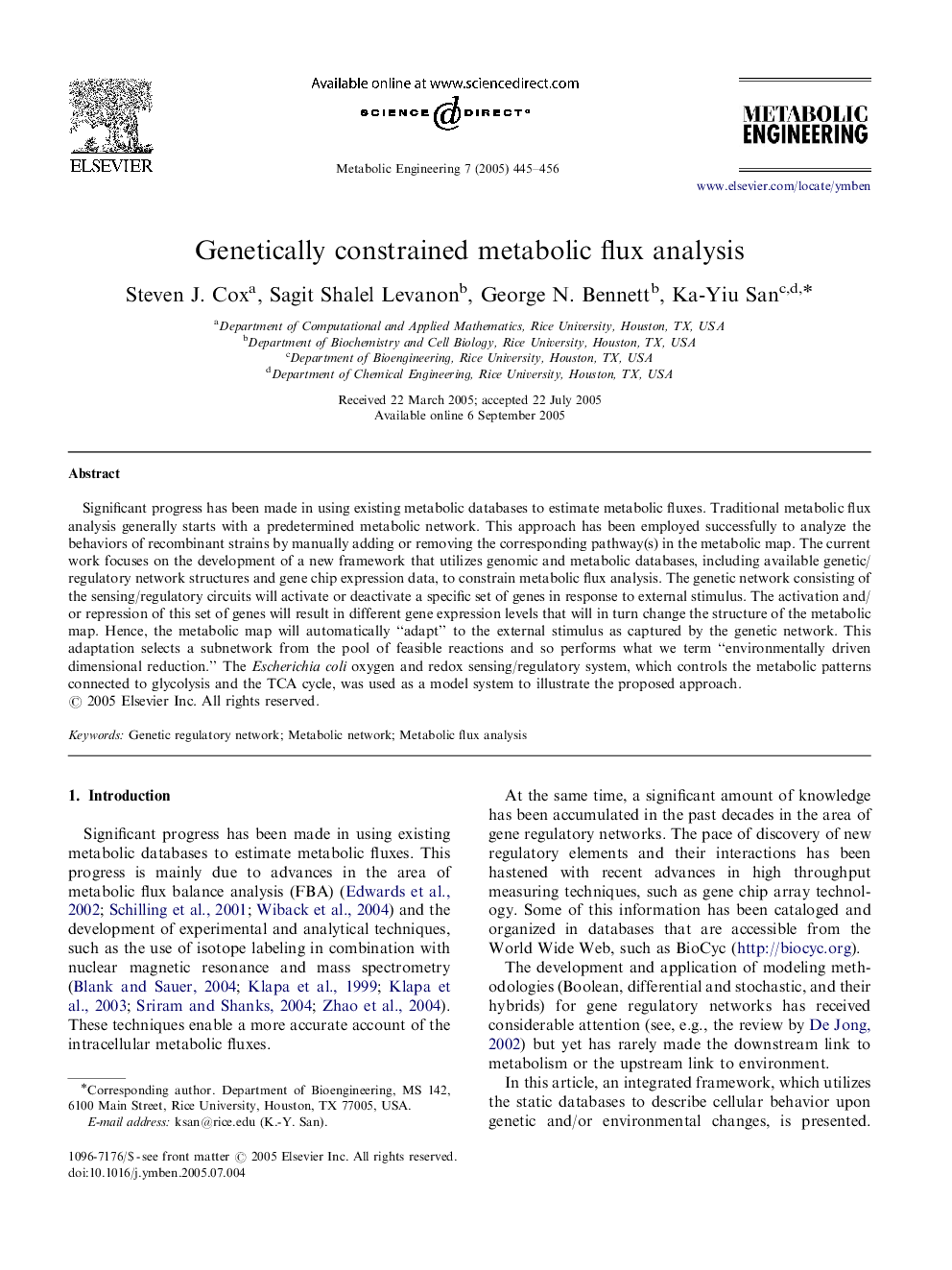| Article ID | Journal | Published Year | Pages | File Type |
|---|---|---|---|---|
| 9607655 | Metabolic Engineering | 2005 | 12 Pages |
Abstract
Significant progress has been made in using existing metabolic databases to estimate metabolic fluxes. Traditional metabolic flux analysis generally starts with a predetermined metabolic network. This approach has been employed successfully to analyze the behaviors of recombinant strains by manually adding or removing the corresponding pathway(s) in the metabolic map. The current work focuses on the development of a new framework that utilizes genomic and metabolic databases, including available genetic/regulatory network structures and gene chip expression data, to constrain metabolic flux analysis. The genetic network consisting of the sensing/regulatory circuits will activate or deactivate a specific set of genes in response to external stimulus. The activation and/or repression of this set of genes will result in different gene expression levels that will in turn change the structure of the metabolic map. Hence, the metabolic map will automatically “adapt” to the external stimulus as captured by the genetic network. This adaptation selects a subnetwork from the pool of feasible reactions and so performs what we term “environmentally driven dimensional reduction.” The Escherichia coli oxygen and redox sensing/regulatory system, which controls the metabolic patterns connected to glycolysis and the TCA cycle, was used as a model system to illustrate the proposed approach.
Related Topics
Physical Sciences and Engineering
Chemical Engineering
Bioengineering
Authors
Steven J. Cox, Sagit Shalel Levanon, George N. Bennett, Ka-Yiu San,
